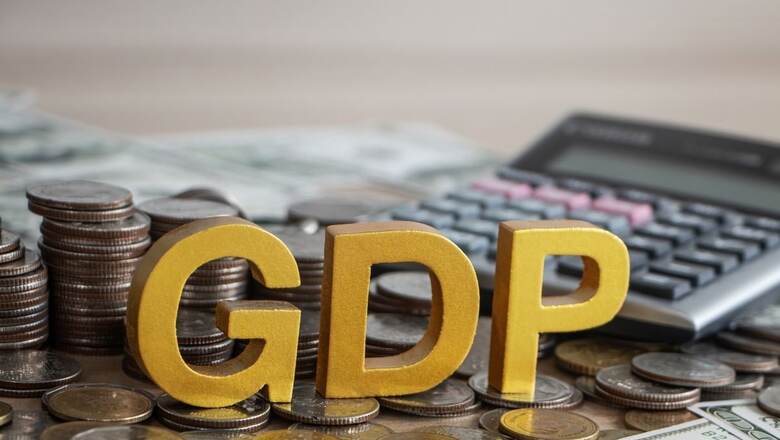
views
The government’s first advance estimate of the Gross Domestic Product (GDP) for the current fiscal, which will end in March, has been a positive surprise for most economists.
Data from the Ministry of Statistics & Programme Implementation (MoSPI) shows that growth for 2023-24 has been estimated at 7.3 per cent. This is higher than the 7 per cent revised estimate by the Reserve Bank of India and also higher than the estimates by most economists as well as those of the IMF and the World Bank (at 6.3 per cent each). With the latest estimate, the government is signalling that India remains one of the world’s fastest-growing economies post Covid-19.
Rajani Sinha, the Chief Economist of CARE Ratings, said MOSPI’s projection of the GDP “seems to be relatively optimistic, surpassing the RBI’s estimate of 7% and our own projection of 6.8 per cent”.
Is the government being overly optimistic? One must remember that for the first advance estimate, sectoral and state government data of just the first eight months (April-November) is usually available, making accurate estimation a tad difficult. The second advance estimate numbers are scheduled to be released by February end, with better input data.
Also, the optimism of MoSPI could well be a consequence of robust government expenditure in infrastructure and other activities for the initial months of fiscal year. As elections come closer, government expenditure is bound to fall.
Gross Fixed Capital Formation (GFCF) or capital expenditure by the government was up by nearly a third between April and November but the full-year expansion in this is pegged at 10.3 per cent, indicating a significant slowdown post November.
The biggest concern from the data is the slowdown in agriculture, which is estimated to grow at just 1.8 per cent against 4 per cent in the previous fiscal year. With shrinking acreage of both, kharif and rabi crops amid a below par and uneven monsoon season, agricultural and allied sectors have naturally slowed down, thereby also impacting rural consumption demand. Another concern which emerges from the data is the slow overall private consumption, with growth estimated at just 4.4 per cent. This could be due to lower-than-expected incomes in both rural and urban pockets.
DK Srivastava, the Chief Policy Advisor at EY, said: “The demand side shows a sluggish performance of consumption growth both private and government at 4.4 per cent and 4.1 per cent respectively. The external sector continues to constitute a major drag on India’s growth with net exports contributing negatively to real GDP growth at (-)3 per cent points. On the domestic side, two major weaknesses pertain to annual growth of agriculture at 1.8 per cent and the implicit price deflator (IPD)-based inflation at only 1.4 per cent. This implies a nominal GDP growth of only 8.9 per cent which will impact upon the budget magnitudes.”
And Sinha of CARE Ratings said the most important monitorable, going forward, would be a more broad-based pick up in consumption demand, which hinges on further revival in the informal sector and rural demand. In the end, unless more FMCG products fly off rural shelves and there is a robust pickup in demand for consumer durables and services in urban markets, the optimism of the government may have to be subsequently toned down.




















Comments
0 comment